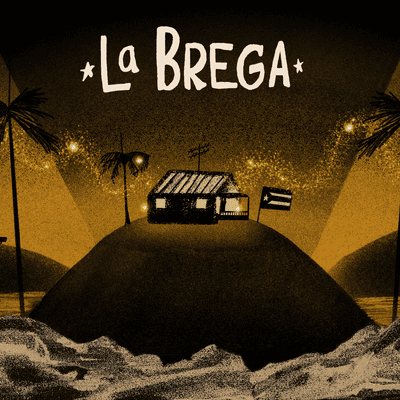The Lost New Jersey Photos of Henri Cartier-Bresson

David Remnick: Not long ago, I was hanging around the office and I came across the New Yorker's Director of Photography, Joanna Milter. On a big desk, she was laying out a series of black and white images, one after another.
Joanna Milter: One of our story editors had forwarded an email to me from a man, Peter Cunningham, who claimed to have access to a cache of images that Henri Cartier-Bresson photographed in New Jersey in the 1970s. I thought, "Is this real? Could this be authentic?" Cartier-Bresson is one of the most famous documentary photographers of all time. His catalog is very well known, very famous. How could there be this cache of unseen, unpublished images?
[music]
David Remnick: The scenes were very recognizable to me from my youth. Commuters stuck in a traffic jam near the George Washington Bridge, beauty salons, an office, huge sprawling power plants. These were terrific pictures by a French photographer who was really one of the masters of the form. Henri Cartier-Bresson had chosen to shoot them all in my home state, in New Jersey.
?Henri Cartier-Bresson: It's a shortcut for America in a way, something where you find extremes. When we mention to anybody that we're doing an essay, that means concentrating on various aspects of New Jersey, they were always surprised, "Why? What's the interest?" It seems that they just go through on the turnpike and it's all the industrial areas that they'd like to forget.
Joanna Milter: The story of how Peter Cunningham came to have these prints in his possession is really interesting. In the 1970s, Peter told me, his girlfriend at the time was working as a producer at a public television station in New York.
Peter Cunningham: Yes, that's right. Working on a PBS show called Assignment America as an associate producer, she came home saying that she wanted to do a show on a photographer and who should she do? Well, I said, "Well, you should get Henri Cartier-Bresson but he'll never do it."
Joanna Milter: She invited Cartier-Bresson to the United States with the proposal that they make a documentary about him and that he'd create a body of work and that they make a documentary around that body of work.
Peter Cunningham: When Jean came home and told me that Cartier-Bresson had said, "Yes," I probably fell on the floor or jumped and touched the ceiling. It was unbelievable because Henri was and still is my hero.
Joanna Milter: Then Peter, who was a young photographer, burgeoning photographer at the time, ended up with the assignment to be his assistant.
Peter Cunningham: We drove out of the city every day and yacht away in the car all the way, and drove all the way back and yacht all the way back. It was only when we were in the process of shooting that Henri didn't want to talk. My job was to make all the interactions, to speak with people, and allow him completely to be himself in the frame. He loved living in the frame of his Leica.
David Remnick: Who would decide where to go and what was the conception behind it all?
Peter Cunningham: Jean Evans in the studio at PBS at Channel 13 did the production. She booked us every day somewhere with the Newark Fire Department or with a nuclear power plant or with the State House in Trenton or this and that. She planned our targets.
David Remnick: Now, as I remember, Cartier-Bresson used to talk about the decisive moment, capturing the decisive moment. That was what it was all about for him. How did you see that in action?
Peter Cunningham: The decisive moment, one thing he told me, I never connected until you mentioned it, David, is that he would say, "Just don't see what's happening now, see what's about to happen. Focus your eyes a second or two in advance of the present tense," which is unusual advice. We are all told to live in the present. Well, he's actually living a second or two before the present.
David Remnick: He's anticipating.
Peter Cunningham: Yes, I think that's right, David.
David Remnick: Did you see him-- Is there any moment, any photograph that you can recall, you said, "Now, I see what he's up to."?
Peter Cunningham: Yes. I'll show, here's on-- They're mounted on board for the TV production. This picture of Governor Brendan Byrne boxing with Jersey Joe Walcott and Jersey Joe has a checkered suit on, and I guess, PR guy in the background has the same checkered suit by coincidence, I'm sure. This was a press event. There were other photographers there. He maybe shot-- I have to look at the contact sheets, but he got maybe shot, I don't know, 10 frames.
He didn't overshoot like we do now with our digital cameras where there's no limit. It used to cost us 35 cents each time we press the shutter, but now, there's no price on it.
David Remnick: Now, it's free [laughs].
Peter Cunningham: Yes, it is. It changes the way we do things. What he did shoot, some of the pictures were more interesting than others, but every single one of them was beautifully composed down to the little black shape in the corner.
David Remnick: It's so true. At one point, Cartier-Bresson says, "In photography, the smallest thing can be a great subject. A little human detail can become a leitmotif."
Peter Cunningham: Henri said that he wanted to show Americans, or New Jersey people, their own culture. He said that, "It's very difficult to see a culture from in-- if you're a part of it." It's like being a fish in water that doesn't see the water. This picture, which is pretty ordinary, really strikes me as an example of that, because at the time, I don't remember, but I probably thought nothing of a guy standing over what we called a girl at the time, and supervising her. It was a boss and a secretary. We don't have bosses and secretaries anymore.
David Remnick: What we're seeing here is a woman at an office seated and she's going through some papers, and hovering above her is what, because of the time, we presume to be her supervisor or her boss, who's a male.
Peter Cunningham: She looks a little scared, doesn't she? As if she can't maybe find the thing the boss is looking for.
David Remnick: It does look almost-- the office looks incredibly deliberately lifeless. It's just cold and endlessly white. You would not want to spend that much time in that room, much less 40 hours a week.
Peter Cunningham: One thing I learned from Henri's work, as a youngster, was the power of the still photograph, that even more than a narrative form, the still photograph could reflect reality in ways that worked like a metaphor in the receiver's mind, so that they exploded with meaning.
David Remnick: Can you give us an example of any of the photographs where you think that's the case?
Peter Cunningham: Yes. Okay, here we are. This is the picture that you, David, thank you, featured as the lead picture in your piece. It's a picture from a beauty school in Central Jersey. There's a person that's making up another person, but he put himself in a mirror, in the corner of a mirror.
David Remnick: You can see in the lower right-hand corner of the photograph. You have a photograph in which one woman is making up another, but it's also about photography. It's about looking. In the lower left-hand quadrant of this photograph, you see Henri Cartier-Bresson taking the photograph. This clearly is, as we now say these days endlessly, a meta picture, a picture about taking pictures, capturing an image and all the rest. It's really quite remarkable.
Peter Cunningham: Yes. Before I worked with Henri, I used to work in that style, black and white style on the street. Afterwards, I realize if I spent my whole life doing this, I could, once in a while, get a picture of his standard, but I couldn't ever achieve his level of consistent excellence. I switched to color film and to a different thing, to doing juxtapositions of images. I consciously changed because he was so good.
David Remnick: He seems so ambivalent about his own art and said, in fact, he would never use a flash, as far as I understand. He said that using a flash was impolite, like coming to a concert with a pistol in your hand.
Peter Cunningham: Well, I completely agree. I've been a performance photographer my whole life and it is. It's a horrible thing to use a flash. It makes the photographer be the center of the action. In a concert hall, the person on stage is the center of the action.
David Remnick: Now, tell me what resulted from all these photographs? What was put on television at the time in the mid-seventies?
Peter Cunningham: Gosh, David, that's a sad story. There was a problem with the production in that the director insisted on doing it his way, despite knowing that Henri's preferences, he cropped the pictures for TV in TV format, which is whatever it is, four-by-five. The show aired with the pictures cropped, which is a sin. It was a horrible scene.
David Remnick: Cartier-Bresson must have been furious.
Peter Cunningham: I was never aware of his personal reaction. He was always friendly with us afterwards. He kept writing postcards and inviting us to visit, but his agent went crazy and--
David Remnick: [chuckles] That's what agents are for.
Peter Cunningham: [chuckles] Well, he did a good job. All history of the New Jersey event disappeared, so in the timeline of Henri's career, photographing in New Jersey doesn't exist. It's not there, it was written out of history.
David Remnick: Then, you hung onto these prints and then finally brought them to The New Yorker.
Peter Cunningham: Well, yes, I protected them for all those times. I was a busy photographer myself, so I didn't pay much attention that they were on my shelves gathering dust for literally 48 years. I'm very grateful that The New Yorker picked them up, because as Henri's assistant, being an assistant is sometimes like a love affair. The love affair can end, but you still have a kind of essence of love for somebody a whole life. That's what I feel with Henri. I'm still his servant and I would like to do what I imagine he would like. In this case, I'd like to have the people of New Jersey be able to see the pictures he made of their state nearly 50 years ago.
[music]
David Remnick: Peter Cunningham is a photographer himself based in Massachusetts, and you can see Henri Cartier-Bresson's photographs of New Jersey at newyorker.com.
[music]
[00:12:22] [END OF AUDIO]
Copyright © 2023 New York Public Radio. All rights reserved. Visit our website terms of use at www.wnyc.org for further information.
New York Public Radio transcripts are created on a rush deadline, often by contractors. This text may not be in its final form and may be updated or revised in the future. Accuracy and availability may vary. The authoritative record of New York Public Radio’s programming is the audio record.





